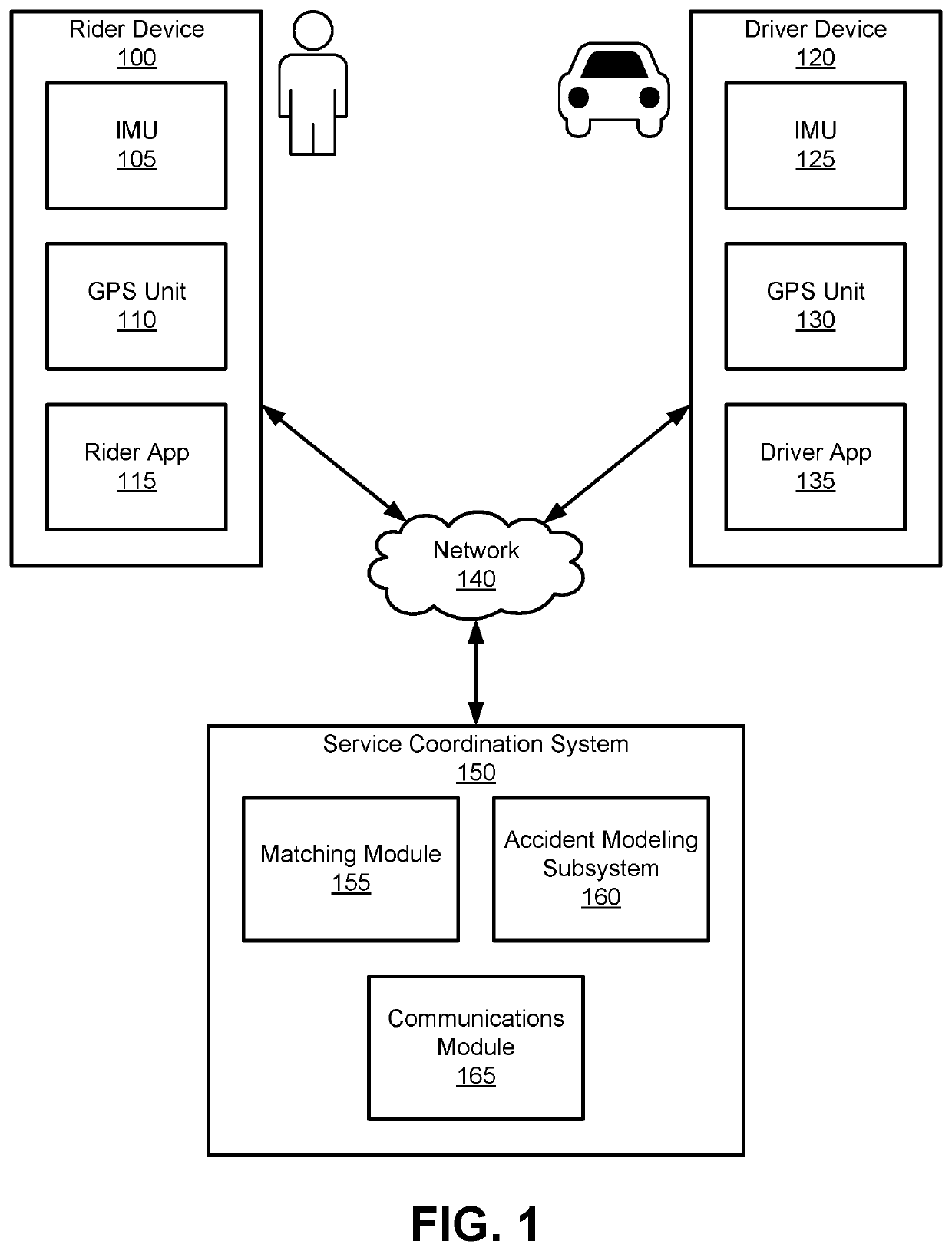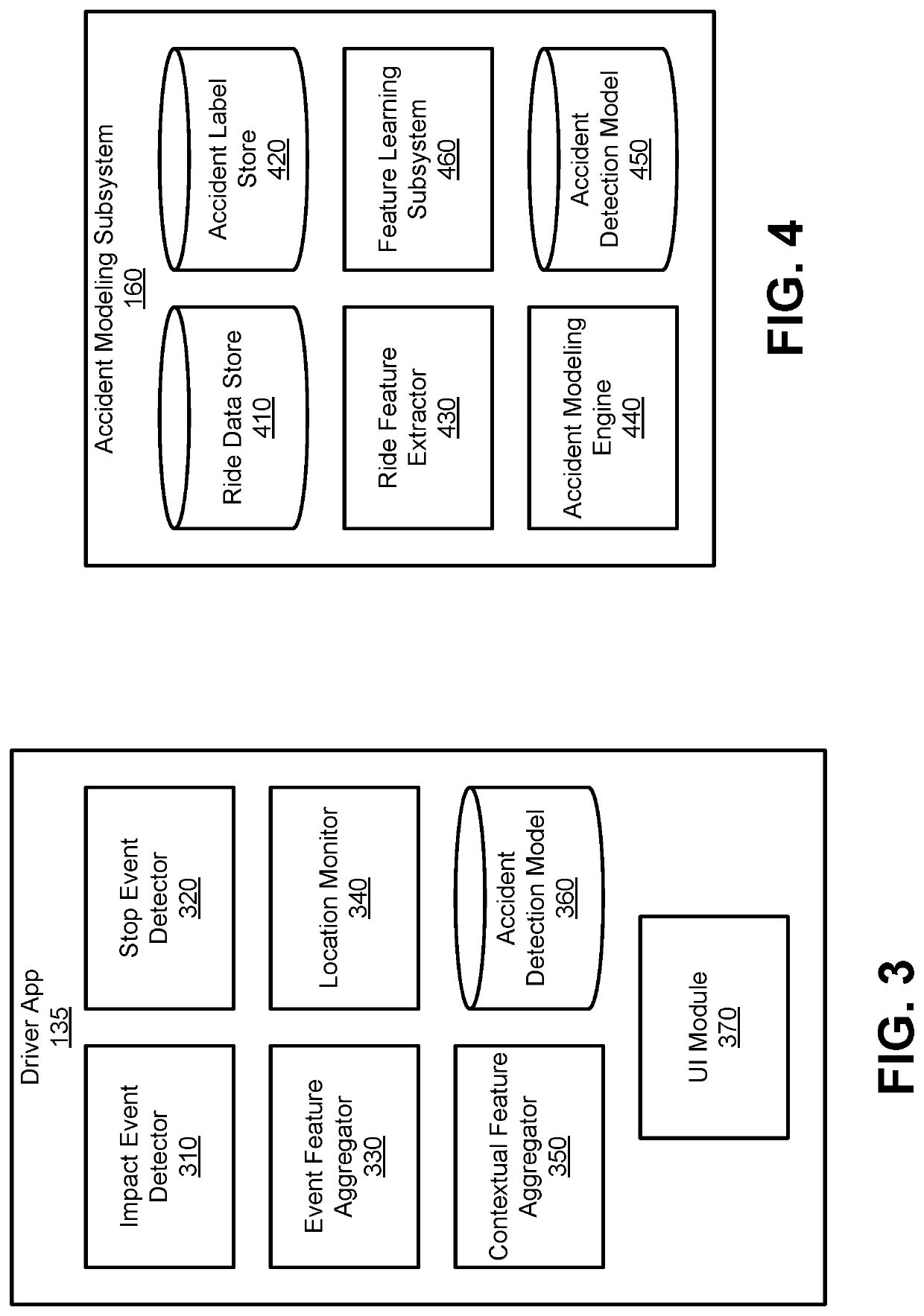Automobile Accident Detection Using Machine Learned Model
- Summary
- Abstract
- Description
- Claims
- Application Information
AI Technical Summary
Benefits of technology
Problems solved by technology
Method used
Image
Examples
Embodiment Construction
[0021]In addition to sensor data detected at a cellular phone, contextual information is used to more accurately predict whether or not an accident has occurred. For example, if a vehicle stops or brakes suddenly, a driver's (or passenger's) phone may detect a high g-force due to an accident, or due to the phone flying onto the floor of the car. If a phone does not detect movement for a period of time following the high g-force, this could be because of an accident, traffic, or a planned or unplanned stop. A high g-force in combination with a stop, or simply an extended stop, could register to a standard accident detection system as an accident. However, it may be the case that the driver stopped short at a destination (e.g., when a rider called out “stop here!”), causing the driver's phone to hit the floor and register a high g-force. After this, the driver may stop for several minutes while the rider collects belongings and exists the vehicle. As another example, the driver may st...
PUM
 Login to View More
Login to View More Abstract
Description
Claims
Application Information
 Login to View More
Login to View More - R&D
- Intellectual Property
- Life Sciences
- Materials
- Tech Scout
- Unparalleled Data Quality
- Higher Quality Content
- 60% Fewer Hallucinations
Browse by: Latest US Patents, China's latest patents, Technical Efficacy Thesaurus, Application Domain, Technology Topic, Popular Technical Reports.
© 2025 PatSnap. All rights reserved.Legal|Privacy policy|Modern Slavery Act Transparency Statement|Sitemap|About US| Contact US: help@patsnap.com



